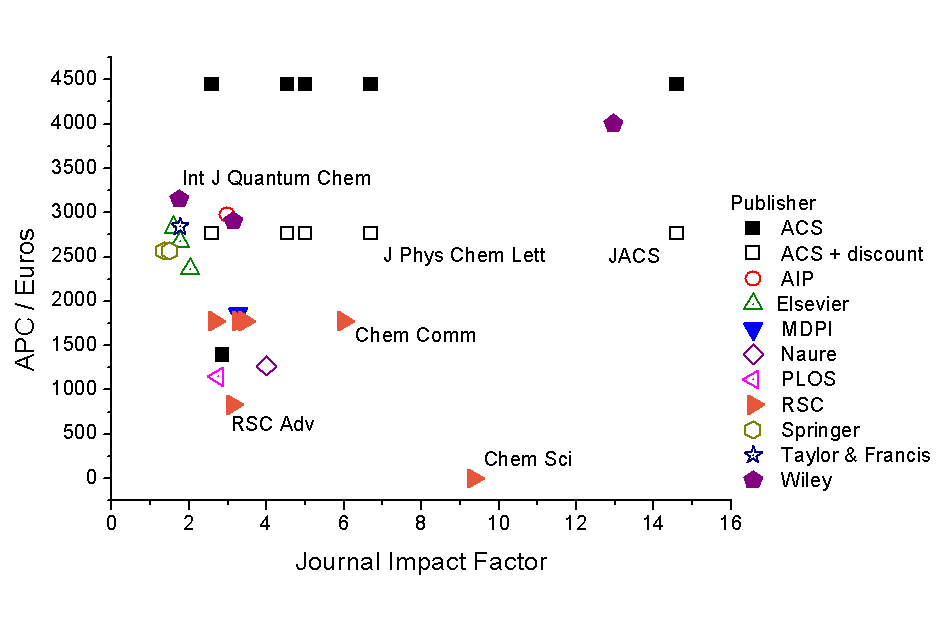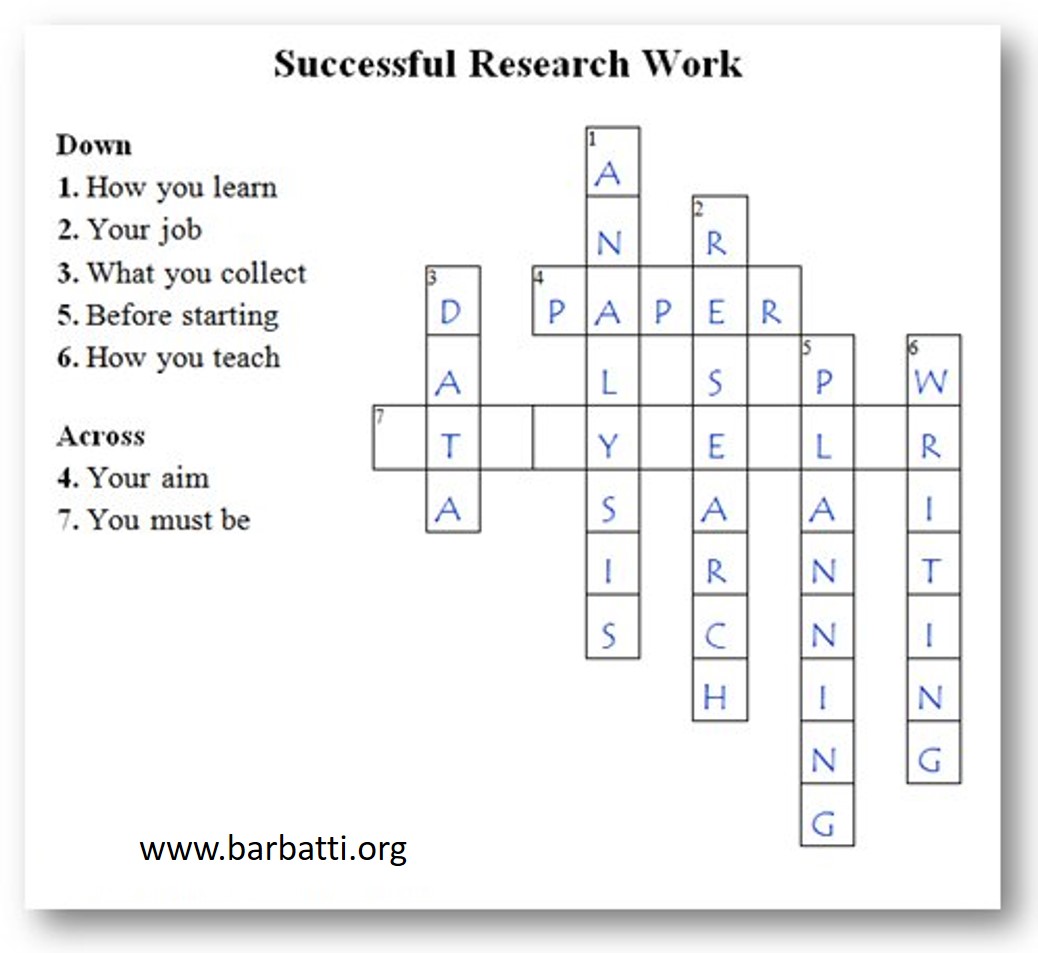All you need to know about open access.
Some time ago, I tweeted asking about the best cost/benefit for open access (OA) publishing in computational chemistry.
This year I already spent well over € 10k with #openaccess charges. @ACSPublications or @SpringerNature charges more than € 3k per paper. It’s nonsense!
Which journal has the best cost/benefit to publishing #CompChem?
— Mario Barbatti (@MarioBarbatti) July 4, 2020
I’ve got a lot of interesting feedback, and I’d like to share with the community some of this information.
Before going on, let me warn you that I’m no specialist on this OA topic. Likely, some of the information below may be imprecise or even mistaken. Thus, check everything by yourself, and if you know better, just let me know, and I can fix it here.
The starters
Let me start by defining a few terms and concepts.
Concerning the paper, there are three different objects:
- Original Manuscript (OM): This is the version of the manuscript that the authors prepared and submitted to a journal.
- Accepted Manuscript (AM): This is the final version of the manuscript prepared by the authors when it is accepted, but still before any enhancement or formatting by the publisher.
- Version of record (VoR): This is the final version of the paper with the journal formatting.
Concerning the type of access, we have:
- Preprint: The authors self-archive the OM in a public repository (like ArXiv or ChemRxiv). Anyone can access and read the work without paying any fee or subscription.
- Green OA: The authors self-archive the AM or VoR in a public, non-commercial repository (like HAL or Zenodo). Anyone can access and read the work without paying any fee or subscription.
- Gold OA: Anyone can access and read the VoR at the journal’s website without paying any fee or subscription. The article processing charge (APC) is paid by the authors.
- Diamond OA: Anyone can access and read the VoR on the journal’s website without paying any fee or subscription. Authors don’t pay APC either. Third-party organizations and donations usually fund Diamond OA journals.
- Paid access: To access a paper, the reader should have a journal subscription (usually institutional) or pay for the paper.
Concerning journals, there are two categories:
- Full OA: The journal only publishes Gold OA papers.
- Hybrid OA/subscription: The journal publishes Gold OA and paid access papers.
Journal’s menu
I collected information about journals relevant to my field (physical chemistry, computational chemistry, molecular physics). This information includes the journal impact factor (2019), type of publication (Full OA / Hybrid), Green OA availability, and Gold OA publication charges.
| Journal | Publisher | Type | JIF | Preprint | Green OA | Gold OA (Eur) |
|---|---|---|---|---|---|---|
| ACS Omega | ACS | Full OA | 3.512 | yes | Immediate | 1052 |
| J Chem Info Model | ACS | Hybrid | 4.956 | yes | Free, embargo 12 months | 3367 |
| J Phys Chem A | ACS | Hybrid | 2.781 | yes | Free, embargo 12 months | 3367 |
| J Phys Chem Lett | ACS | Hybrid | 6.475 | yes | Free, embargo 12 months | 3367 |
| JACS | ACS | Hybrid | 15.419 | yes | Free, embargo 12 months | 3367 |
| JCTC | ACS | Hybrid | 6.006 | yes | Free, embargo 12 months | 3367 |
| J Chem Phys | AIP | Hybrid | 3.488 | yes | Free, no embargo | 2947 |
| Chem Phys | Elsevier | Hybrid | 2.348 | yes | Free, embargo 24 months | 2670 |
| Chem Phys Lett | Elsevier | Hybrid | 2.328 | yes | Free, embargo 24 months | 2670 |
| Comput Theor Chem | Elsevier | Hybrid | 1.926 | yes | Free, embargo 24 months | 2870 |
| Results Chem | Elsevier | Full OA | - | yes | Immediate | 880 |
| F1000Research | F1000Research | Full OA | 2.30 | yes | Immediate | 1134 |
| Open Res Europe | F1000Research | Full OA | - | yes | Immediate | 0 |
| Molecules | MDPI | Full OA | 4.411 | yes | Immediate | 1830 |
| Sci Rep | Nature | Full OA | 4.379 | yes | Immediate | 1690 |
| PeerJ Phys Chem | Peer J | Full OA | - | yes | Immediate | 1004 |
| Plos One | PLOS | Full OA | 3.240 | yes | Immediate | 1470 |
| Chem Sci | RSC | Full OA | 9.825 | yes | Immediate | 0 |
| RSC Adv | RSC | Full OA | 3.361 | yes | Immediate | 876 |
| Chem Comm | RSC | Hybrid | 6.222 | yes | Free, embargo 12 months | 1870 |
| New J Chem | RSC | Hybrid | 3.591 | yes | Free, embargo 12 months | 1870 |
| PCCP | RSC | Hybrid | 3.676 | yes | Free, embargo 12 months | 1870 |
| R Soc Open Sci | The Royal Society | Full OA | 2.963 | yes | Immediate | 1440 |
| Phil Trans A | The Royal Society | Hybrid | 4.226 | yes | Free, no embargo | 2040 |
| SciPost Chem | SciPost | Full OA | - | yes | Immediate | 0 |
| J Mol Model | Springer | Hybrid | 1.810 | yes | Free, embargo 12 months | 2590 |
| Theor Chem Acc | Springer | Hybrid | 1.702 | yes | Free, embargo 12 months | 2590 |
| Top Curr Chem | Springer | Hybrid | 9.060 | yes | Free, embargo 12 months | 3060 |
| Mol Phys | Taylor & Francis | Hybrid | 1.962 | yes | Free, 12 months embargo | 3095 |
| Angew Chemie Int Ed | Wiley | Hybrid | 15.336 | yes | Free, embargo 12 months | 4000 |
| ChemPhysChem | Wiley | Hybrid | 3.102 | yes | Free, embargo 12 months | 3200 |
| Int J Quantum Chem | Wiley | Hybrid | 2.444 | yes | Free, embargo 12 months | 3150 |
| ChemPhotoChem | Wiley | Hybrid | 2.444 | yes | Free, embargo 12 months | 2900 |
The information in this table is from July 2021 and may be outdated. For the current status and APC of each journal, visit the publisher’s website. The APCs for Gold OA are in Euros and don’t include VAT. For converting some values, I used the exchange rate of 1 EUR = US$ 1.19 = 0.86 GBP (July 05, 2021). Institutional, regional, and other discounts may apply.
The impact factor for F1000Research is from Scopus. All others are from the 2020 release of Clarivate Journal Citation Reports.
So, how is the preprint today?
Usually, authors can submit their paper as a preprint before submitting it to a journal. I have heard of journals that may not accept it, but in my field, preprints are generally welcome. Note that all journals in this list accept submission of manuscripts that have already appeared as a preprint.
Many institutions and funding agencies require preprint self-archiving or even Green OA. My university, for instance, requires that we self-archive the AM at the French repository HAL.
Feeling a Green OA option?
In H2020 grants (like ERC and FetOpen), Green OA with a maximum 6-month embargo is mandatory, as defined in Article 29.2 of the grant agreement. It means that the AM of a paper funded by these grants must be free to anyone no later than six months after publication.
Most journals will impose some restrictions on Green OA. As I show in the Table, in my field, they usually only allow Green OA after 12 12-month embargo.
This means that H2020 grantees cannot count on this option, as they should have Green OA no later than six months.
Two notable exceptions among the hybrid journals are the J Chem Phys and Phil Trans A. Both allow free and immediate Green OA of the AM!
In the full OA journals, when authors pay for Gold OA, Green OA of both AM and VOR is usually allowed as part of the license.
Gold and Diamond OA: Who is paying the bill?
The publication fees (APC) for Gold OA are generally scorching!
Among the publishers, RSC has the most reasonable fees. ACS has the highest fees.
Note, however, that the final ACS price may be much lower than the full price in the Table, as authors may have institutional and ACS membership cumulative discounts. The price may drop from €3387 to about €2760. But it can also go higher if the authors opt for a CC-BY license. 
Curiously, the APC doesn’t correlate with the impact factor, as we see in the figure above. On the contrary, publishing Gold OA in a journal with a JIF lower than two is pretty expensive, reaching €3150 in Int J Quantum Chem.
Between JIF 2 and 4, there are several reasonably priced journals; the cheapest option is RSC Adv, €832.
The sweet spot, of course, is Chem Sci, which is for free!
Besides Chem Sci, there are a few other Diamond OA journals around. Open Res Europe (you must be an H2020 grantee to submit there), SciPost Chem (I’m a member of their Editorial College), and Peer J Phys Chem.
Why are full OA journals popping out lately?
You probably heard about Plan S, an initiative of several funding agencies to make it mandatory to publish in a Full OA journal in 2021.
For this reason, many Hybrid journals are creating Full OA twin versions, like Chem Phys Lett X or JACS Au.
Journals are like wine
Well, I hope this information helps you to make an informed decision concerning OA.
As for me, from now on, I’m choosing journals like I chose wine: with an eye on the right column of the menu.
MB

